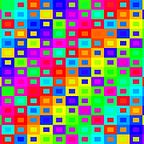Broken Drawings
Fractals & Scalar Invariance
Drawings are struggles with finitude. They build from a single source that assembles with others, leaving traces, like an invisible cipher that forges lines in space.
Here, the circle does not display the qualities it is most known for but rather explores what it could be. It is not whole or complete but instead grows into itself.
It is a circle that refuses its own limit, a circle that struggles to be endless.
The source shapes, derived from simple polyhedra that shrink, grow, and attach, make three-dimensional fractals. 1 It is a drawing system that is infinitely self-scalar; modular networks expand and contract in all directions. The drawings express their underlying geometry as they carry information and gravity.
Railing: a single line that curves through a lattice of fractal circles and back onto itself to form a continuous loop.
Each line is dependent on its neighbor for structure. Patterns emerge through continuity, larger assemblies yield new readings, and signals emerge from noise.
The lines, and the drawings they make, are the structure and the space. Looping sculptures and three-dimensional drawings merge with picture language over a network of self-structural surfaces.
They are elements in a complex layering of work, creating continuities between representation and three-dimensional space.
1
Fractal: coined by the French mathematician Benoit Mandlebrot in 1975 to describe a shape more inherent to natural pattern than classical geometry; coming from the Latin fractus or “broken.” The recursive quality of fractal drawings, self-similar parts repeating at multiple scales, proves that complexity resides in the part, not the whole. In other words, the drawing is broken by itself to make itself.
Note:
This article is an excerpt from our book Trace Elements by Columbia Books on Architecture and the City.
